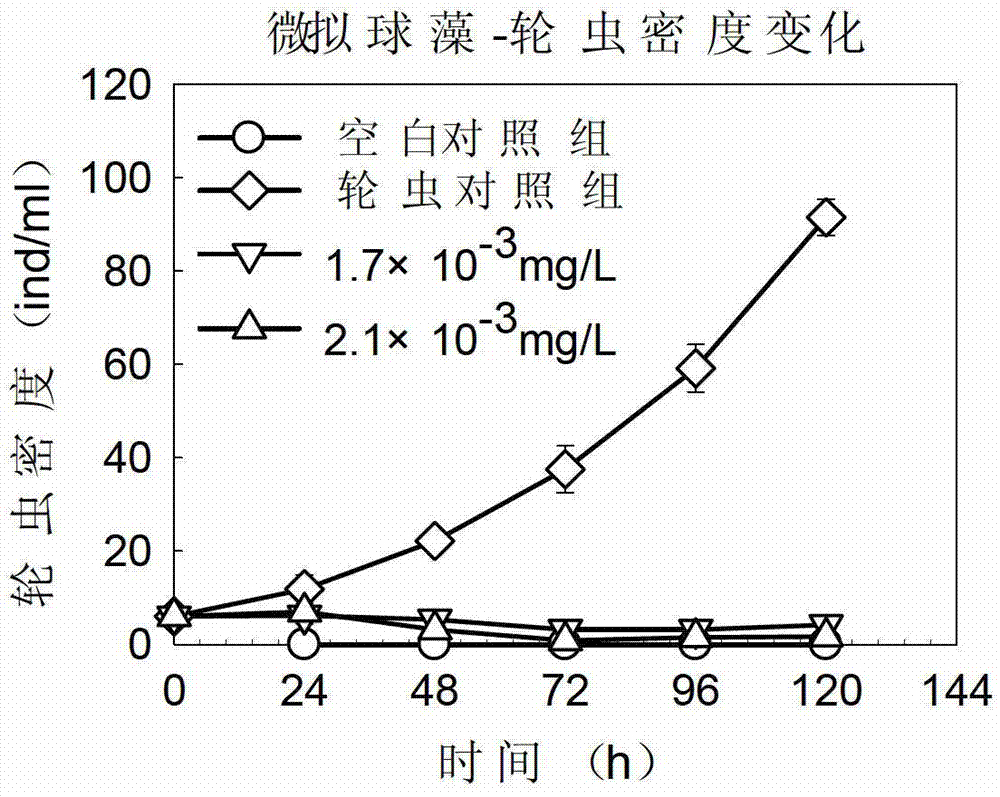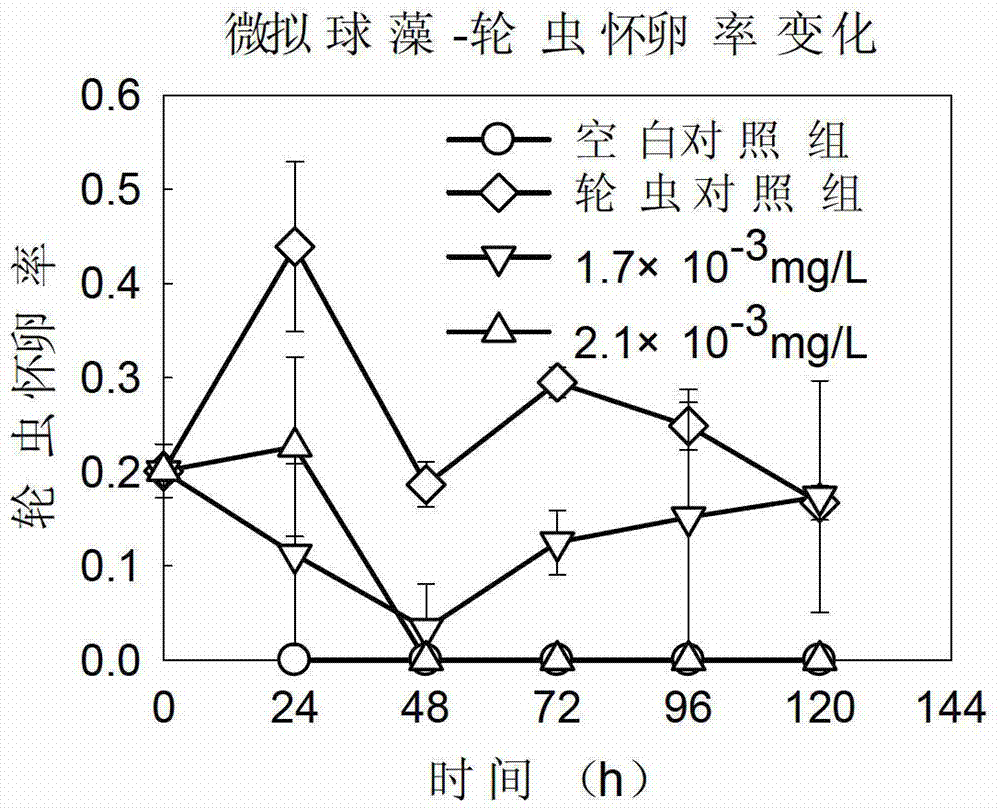Application of tetracyclic triterpenoids in preparation of low-dosage rotifer insecticides
A technology of tetracyclic triterpenes and compounds, which is applied in the field of preparation of low-dose rotifer insecticides by tetracyclic triterpenoids, and can solve the problems of reduced rotifer populations, reduced fecundity rate, and slow filtration speed, etc. , to achieve the effect of less dosage
- Summary
- Abstract
- Description
- Claims
- Application Information
AI Technical Summary
Problems solved by technology
Method used
Image
Examples
Embodiment 1
[0040] 1. The insecticide that selectively kills rotifers is a kind of tetracyclic triterpenoids extracted from Meliaceae plant Neem Bark and Chuan Neem. Its chemical structure is as follows, specifically:
[0041] The extraction method of tetracyclic triterpenoids can be found in Liu Xiang and Wang Qiu'an, editor in chief, 2010, Natural Products Chemistry. Chapter 2 Extraction and Separation of Natural Products and Structure Identification, Chapter 6 Terpenoids Chapter 2 Extraction and Separation of Terpenoids, that is, plant materials are dried and ground, extracted with benzene or 60% ethanol under hot reflux, and concentrated benzene or After the alcohol solution is added petroleum ether or chloroform for extraction, the tetracyclic triterpenoids are precipitated.
[0042] Formula one
[0043] 2. Use fresh water to dilute the insecticide into a 6mg / L liquid medicine. In order to achieve the best efficacy, use the medicinal solution to be used. If storage is required, the used...
Embodiment 2
[0048] Application in the culture of Pseudochlorococcum: Distilled water is used to prepare 20ml of the insecticide with a concentration of 6mg / L and put it in a 50ml sealed plastic tube, protected from light and low temperature, for later use. The rotifer Brachionus plicatilis is aerated and cultivated with filtered seawater (salinity of 32, pH of 8.2), during which it is fed with Pseudochlorococcum. Take Pseudochlorococcum as the experimental algae species, use L 1 Culture medium to logarithmic growth phase, culture light is 120μmolm -2 s -1 , The photoperiod is D:N=14h:10h. During the experiment, Brachionus plicatilis was added to 700ml of algal cell culture medium at a density of 5 tails per milliliter, and the algal solution without rotifer was used as a blank control group. After 6 hours of adaptation to the rotifers, 0.21ml and 0.25ml of insecticide (6mg / L) were added to make the final concentration 1.7×10 -3 mg / L and 2.1×10 -3 mg / L. At the same time, the algae fluid ad...
Embodiment 3
[0053] Application in the cultivation of chlorella: Prepare 20ml of the used insecticide with a concentration of 6mg / L in distilled water and place it in a 50ml sealed plastic tube, protected from light and low temperature, for later use. The rotifer Brachionus plicatilis is aerated and cultivated with filtered seawater (salinity of 32, pH of 8.2), during which it is fed with Chlorella. Using C146 chlorella in the laboratory as the experimental algae species, using L 1 Culture medium to logarithmic growth phase, culture light is 120μmolm -2 s -1 , The photoperiod is D:N=14h:10h. During the experiment, Brachionus plicatilis was added to 700ml of algal cell culture medium at a density of 4 tails per milliliter, and the algae solution without rotifer was used as a blank control group. After 6 hours of adaptation to the rotifers, 0.21ml and 0.25ml of insecticide (6mg / L) were added to make the final concentration 1.7×10 -3 mg / L and 2.1×10 -3 mg / L. At the same time, the algae liquid...
PUM
 Login to View More
Login to View More Abstract
Description
Claims
Application Information
 Login to View More
Login to View More - R&D
- Intellectual Property
- Life Sciences
- Materials
- Tech Scout
- Unparalleled Data Quality
- Higher Quality Content
- 60% Fewer Hallucinations
Browse by: Latest US Patents, China's latest patents, Technical Efficacy Thesaurus, Application Domain, Technology Topic, Popular Technical Reports.
© 2025 PatSnap. All rights reserved.Legal|Privacy policy|Modern Slavery Act Transparency Statement|Sitemap|About US| Contact US: help@patsnap.com



